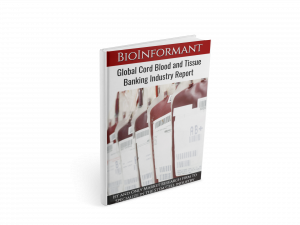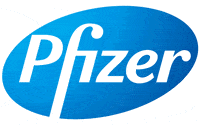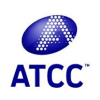|
|
Over the past 30 years, cord blood and cord tissue have gained popularity and commercial traction due to the valuable stem cells they contain. According to ClinicalTrials.gov, there are over 1,360 clinical trials evaluating the use of cord blood and tissue-derived cells. These studies typically leverage unmanipulated whole cord blood (total nucleated cells/TNC), mononuclear cells (MNC), or cord blood-derived mesenchymal stem cells (MSCs).
While the use of cord blood for HSCT is on the decline, the release of cord blood units for preclinical and clinical trial investigation is on the rise. For example, in 2006 Cord Blood Registry (the largest cord blood bank in the U.S.) released only 2 CBUs for regenerative medicine and 33 units for hematopoietic stem cell transplantation.
Today, CBR releases an average of 500 units annually for use in regenerative medicine. This shift toward the use of cord blood and tissue within regenerative medicine (RM) applications is stunning.
The cord blood industry has also been witnessing record levels of M&A activity, with market leaders gaining market share at the expense of niche and specialty competitors and large investment groups vying for acquisition opportunities.
Diversifying Cord Blood and Tissue Banking with Complimentary Services
As the cord blood and tissue banking market has matured, numerous industry competitors have been exploring how to diversify, cross-sell additional products and services, and add complimentary offerings.
For example, when GI Partners acquired Cord Blood Registry (CBR) for $530 million from AMAG Pharmaceuticals in June 2018, CBR was merged with California Cryobank to establish the California Cryobank Life Sciences Platform. In January 2020, the Generate Life Sciences brand was launched to combine these sub-brands—as well as other cutting-edge newborn stem cell banking, reproductive and genetic service brands—into a single global life sciences brand.
GI Life Sciences subsequently acquired 200,000 more cord blood and tissue units when it bought Cell Care group. This acquisition included Cell Care in Australia, as well as Insception Lifebank, Cells for Life, and the Victoria Angel public bank in Canada. In November 2021, CooperCompanies’ (NYSE: COO) bought Generate Life Sciences from GI Partners for an astounding $1.6M, acquiring its 1.1M units under management.
Despite the ownership change, Generate Life Sciences continues to embody this diversification of cord blood and tissue banking services, stating that it offers a diverse range of “reproductive, newborn stem cell, and genetic services” through it seven sub-brands that are shown below.
The seven sub-brands owned by Generate Life Sciences.
Similarly, Celularity Inc. has been developing placenta-derived allogeneic immuno-oncology and regenerative products and simultaneously offers cryopreservation of umbilical cord and placental tissues through its private arm, LifeBank USA.
Celularity also acquired the private bank CariCord in August 2018 to augment its biosourcing capabilities for placenta-derived products.
By January 2021, Celularity had announced it was merging with GX Acquisition Corporation in preparation to become a publicly listed company. That event raised an astonishing $372 million from investors and cash held in GX Acquisition Corp.’s trust account that was added to the combined company’s balance sheet.
Cord Blood and Tissue Banking Trends in 2022
Globally, cord blood industry consolidation has also accelerated, particularly within Europe, Latin America, and Asia.
In addition to these developed markets, cord blood and tissue banking is accelerating as a service within developing regions. For example, India represents an incredibly promising market for cord blood banking, because it has a staggering population of 1.4 billion. Representing 18% of the global population, this means nearly one-in-five people worldwide lives within the country. This also places India head-to-head with China as the world’s most populous country.
Interestingly, India’s population is being propelling by a birth rate of 19 births per 1,000 residents, a figure which substantially exceeds its death rate of 7.3 deaths per 1,000 residents. Major market leaders in India include LifeCell International, ReeLabs, CordLife, CryoViva, and others.
Today, novel pricing strategies, product cross-sells and upsells, and ingenious online and offline marketing strategies are being implemented by the industry’s market leaders. For example, ViaCord has run marketing campaigns with major maternity brands, such as Destination Maternity, while CBR specializes in luncheons and educations events for Ob/Gyns, midwives, and birthing professionals.
Many cord blood and tissue banking providers also run Google Adwords Campaigns, with the average price per click (PPC) varying from $20-60, depending on the keyword. Those PPC rates are as high as some of the most competitive keywords online, including “lawyer”, “insurance”, and “mortgage”.
Of course, new technologies to support ex vivo cord blood expansion are advancing at brisk speed.
If you are competing within the global cord blood banking market, then you know it is becoming increasingly competitive and the rate of change is exponential. Given the rapidly developing and competitive nature of this global market, you don’t have the time to do the research.
Recently released, this 254-page global strategic report will position you to:
- Capitalize on emerging trends
- Improve internal decision-making
- Reduce company risk
- Approach outside partners and investors
- Outcompete your competitors
- Implement an informed and advantageous business strategy






















Tell Us What You Think!